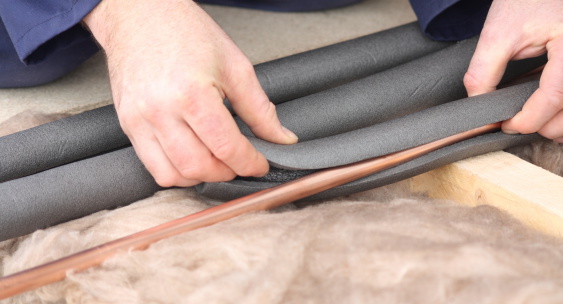You might not think about it, but insulation can save you a lot of money on your energy bill. In fact, every year, Americans spend an estimated $128 billion dollars on energy costs. That’s a lot of money that could be saved if we just improved our insulation levels—but it’s not easy to do. The good news is that there are simple ways to improve your home’s insulation without spending a fortune. By following these tips, you can make some big improvements in your energy bills and help keep your home warm and comfortable all winter long with blown in insulation.
How to Insulate Your Home for Less?
In insulation, we’re talking about material that helps protect against heat and moisture intrusion. Common types of insulation include wallboard, cellulose insulation, blown-in ceiling insulation, and R-8 or R-12wallboard.
How to Choose the Right Insulation?
When it comes to choosing the right type of insulation for your home, there are a few things you need to take into account. In addition to the specific needs of your home (like a low enough temperature rating for an attic), you also want to consider how much insulation you need in order to achieve your desired level of warmth and comfort. When it comes to choosing the right kind of insulation for your home, factors like these can be important to consider.
One final thing you should keep in mind when looking at insulating your home is budgeting. If you want to save money on your energy bill but don’t want any extra noise or heat added onto your property, then you may want to choose an option like fiberglass or metal sheeting as opposed to traditional wallboard or cellulose insulation.
How to Protect Your Home from Weather Damage?
In order to protect your home from weather damage, you’ll need to do a few things. One is to ensure that your home has proper insulation. Insulating your home can make it much harder for the weather to damage it, as well as save you money on cooling bills and other repairs. Another important thing to keep in mind is storm protection. By protecting your home with plates, gables, and roofing materials, you can help defend it from storms. Finally, remember to keep your home tidy and clean for an extra layer of defense against stray weatherproofing.
Protect Your Home from Storm Damage.
In order to protect your home from storm damage, you’ll also need to take some precautions. One is to have proper ventilation systems in place so that the interior of your house doesn’t get too warm during a storm. You can also add storm windows or door guards if necessary. And if there are anysignificant trees in your area, be sure to chainsaw them down before the storm comes!
Protect Your Home from Heat Damage.
Insulation may not do enough to protect your property from heat damage; in fact, many homes actually suffer more heat loss than they do water loss during a thunderstorm or hurricane! To prevent this happening, make sure you have air conditioning or window AC systems installed in all of your rooms and bathrooms; add an attic fan or solar panel if needed; and keep garden plants out of direct sunlight during the hottest months of the year!
Protect Your Home From Stray Weather:
Another important way to protect against stray weather is by keeping property clear of clutter and debris which could attract rain or wind gusts into your house- both good things for keeping costs low when repairing or replacing damages!
How to Protect Your Home from Fire?
Insulating your home is one of the most important steps you can take to protect it from fire. Fire can easily start in an unprotected structure, such as a home. To prevent your home from becoming a victim of fire, follow these tips:
1. Make sure all doors and windows are locked when you’re not home.
2. Install smoke detectors in all areas of your house- including the attic and roof.
3. Create a firesafety plan and keep it up-to-date with changes in safety regulations.
4. Keep any tools or materials that could be used to start a fire away from your house- including firearms and fireworks.
Conclusion
Protecting your home from weather, fire, and Explosion damage is a vital part of maintaining your safety and security. By following these simple steps, you can keep your family safe and comfortable during all types of weather conditions. As a result, it’s important to protect your home from any potential threats. By following these tips, you can keep your home in top condition and ensure that it remains unharmed during the most catastrophic events.




















